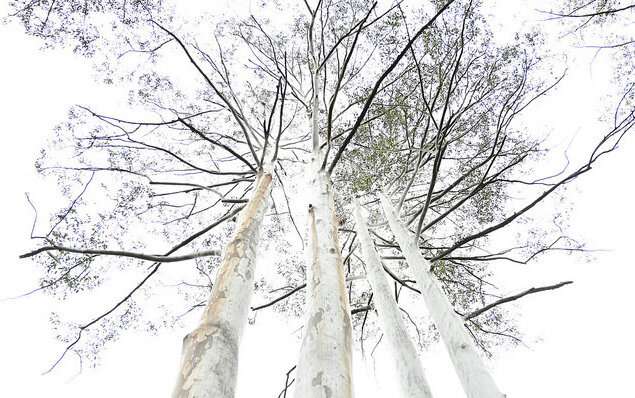The flooded gum or rose gum (Eucalyptus grandis). Credit: Geoexplore
An Aussie eucalypt can 'remember' past exposure to extreme heat, which makes the tree and its offspring better able to cope with future heatwaves, according to new research from Macquarie University.
This finding could have important implications for restoring ecosystems and climate-proofing forestry, as the number of hot days and heatwaves increase due to climate change.
"Unlike animals, which can bury deeper into the soil or flee to cooler locations, plants are stuck in one spot and so must be able to withstand extreme conditions in situ," says Dr. Rachael Gallagher, senior author of the paper published in the journal Functional Ecology.
Rachael and her team looked at how different populations of Eucalyptus grandis seedlings, commonly known as flooded gum or rose gum, responded when they were exposed to a simulated four-day 42°C heatwave in the lab.
The flooded gum is a widespread tree species along 2,000 kilometres of Australia's east coast, from Newcastle in New South Wales to Cairns in far north Queensland. It is also an important forestry species, grown in timber plantations across the globe including in Australia, South Africa and Brazil.
The researchers found that seedlings whose parents had experienced more days of extreme heat in the wild were better able to cope with the simulated heatwave conditions, because they made more protective proteins to protect their cells from heat stress.
These protective proteins act as molecular chaperones: they transport other proteins to their correct locations within the cell, and help the cell to keep functioning normally despite the stress it is under.
"This is a significant new finding," says Rachael, "we have shown that trees have a 'molecular memory' for extreme heat."
Compared to other plants like herbs and grasses, trees typically take a long time to mature and make new seeds. This may limit their ability to adapt to our rapidly changing climate.
"By using this approach we can work out which populations might provide the best seed for restoring ecosystems and climate-proofing forestry as temperatures become more extreme," says Rachael.
More information: Timothy Maher et al. Evidence for local adaptation to extreme heat across populations of a widespread tree from quantitative proteomics, Functional Ecology (2018). DOI: 10.1111/1365-2435.13260
Journal information: Functional Ecology
Provided by Macquarie University
























